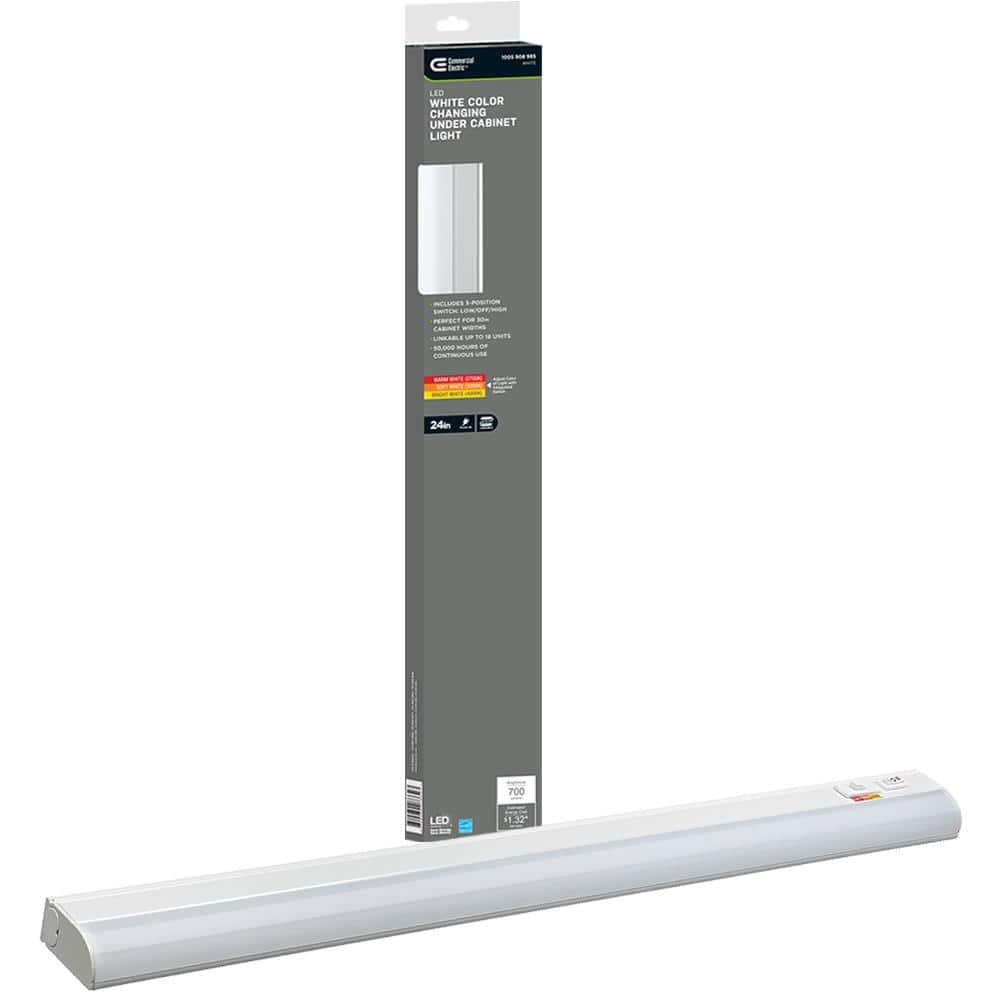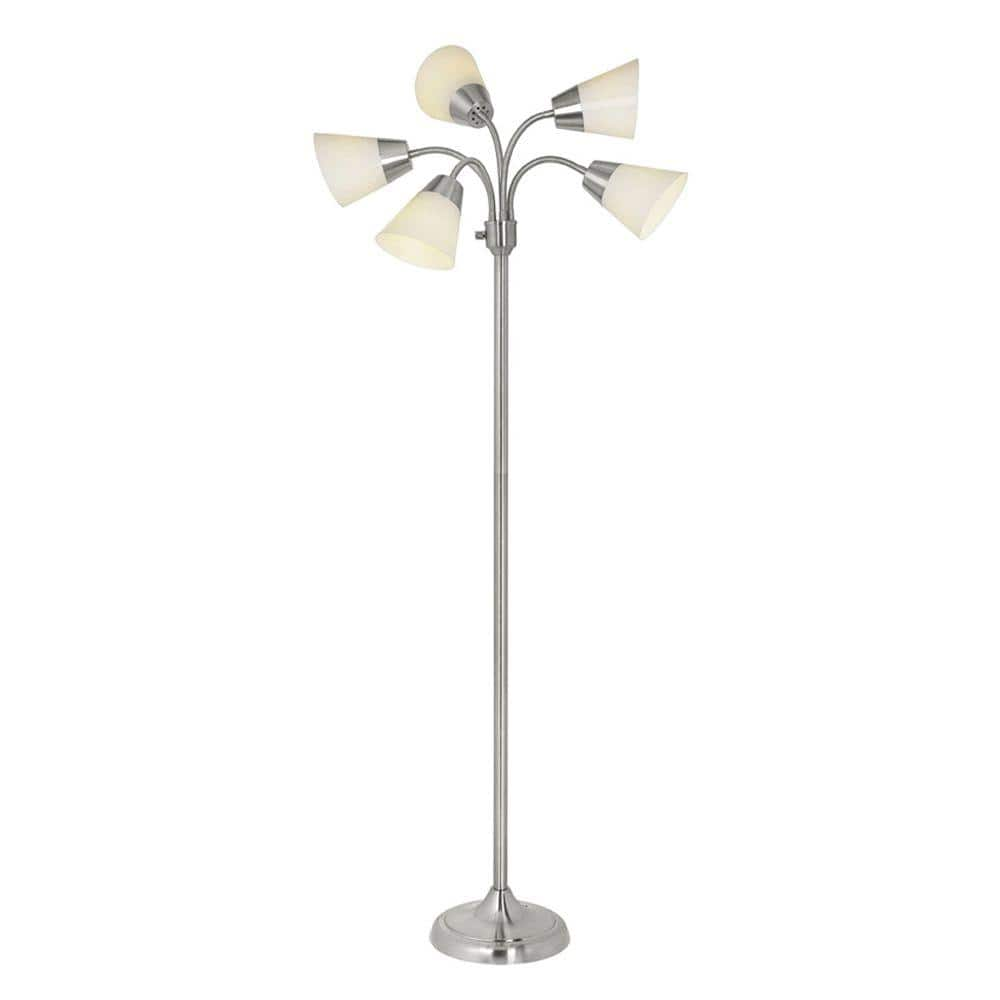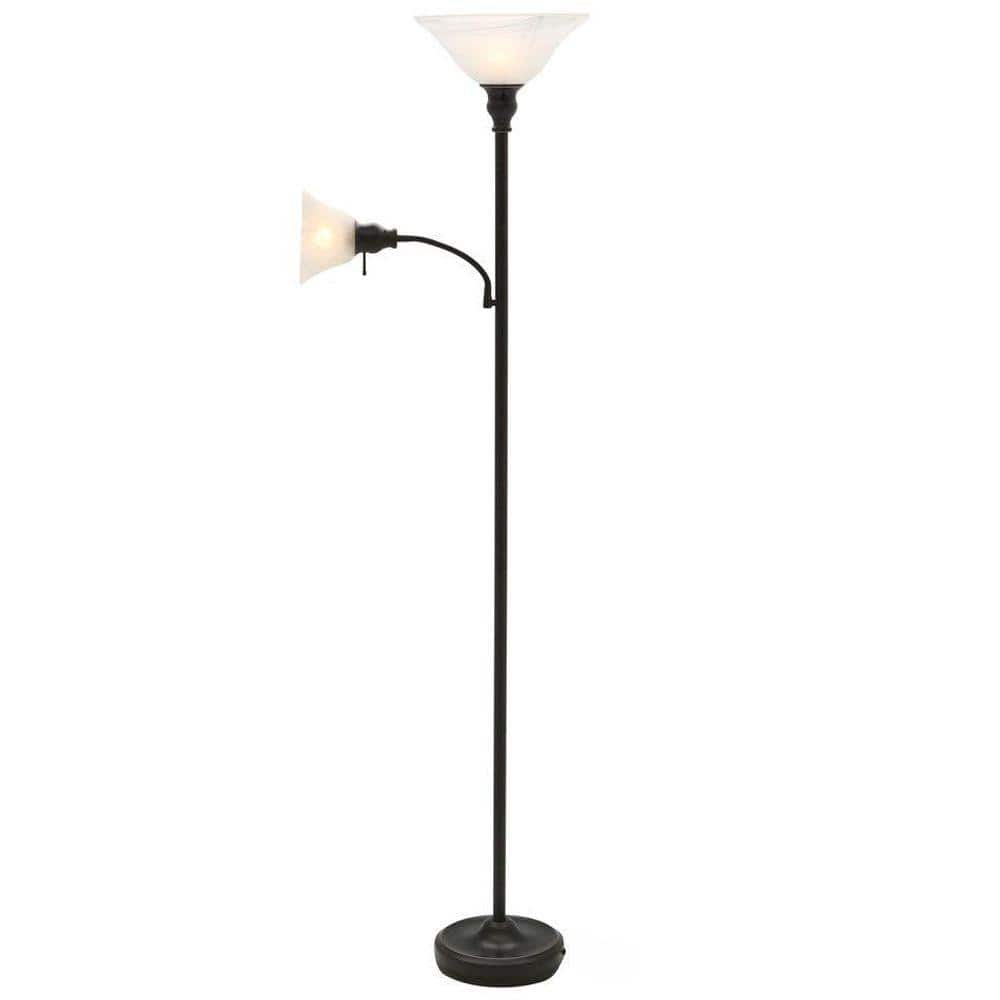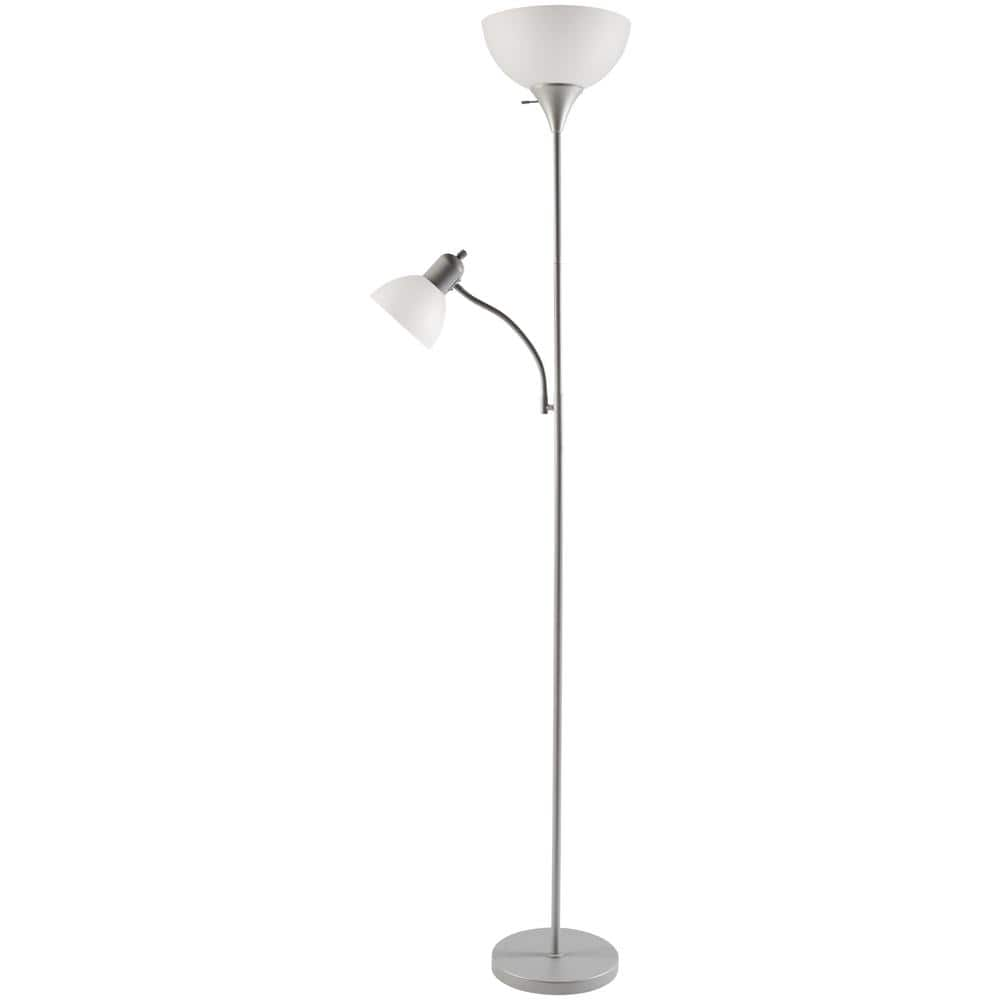Commercial Electric Plug-In 24 inch Linkable LED Undercabinet Light Task Under Counter Kitchen Lighting 3 Color Temperature Options
Kitchen, closet light, garage, office, workstations, workshop. Perfect for 30 inch cabinet widths and linkable up to 18 units. No wiring required, ease of installation with plug-in connection.
Commercial Electric 24in. Plug-in LED Under Cabinet Light is designed to replace over-heated under cabinet incandescent, puck and xenon lights with an energy-efficient LED fixture. Under cabinet lighting is aesthetically pleasing and not only will it improve the brightness and overall ambiance of your kitchen, but it can also increase the resale value of your home. This under cabinet offers several lighting options to customize brightness levels. At any time, using slide switch, select between Warm White, Soft White, Bright White plus choose Low or High intensity for dimming or toggle center to turn off fixture. Our 24in. size is perfect for larger cabinet widths and is linkable up to 18 units. With a lifespan of up to 50,000 hours, our LED under cabinet light is maintenance free with absolutely no bulbs to replace. Perfect for kitchen preparation, underneath cabinets, under desk-hutch, workstations, cabinet unit, shelving, workbench, closet or accent lighting.
- COLOR TEMPERATURE OPTIONS: 2700K Warm White, 3000K Soft White or 4000K Bright White
- Step Dimmable – Use 3-position switch for LOW or HIGH illumination or toggle to the middle position to turn OFF the fixture
- Customize light output and step dimmer by using toggle switches directly on the fixture
- Perfect for 30in cabinet widths
- Linkable up to a maximum of 18 units, do not exceed 198 total watts for interconnected lights
- 5ft. plug-in power cord, 12in. linking cable, End-to-End connector cap and screws are included
- 700 Lumens of brightness using only 11-Watts of energy
- Replaces outdated and hot 60-Watt xenon pucks, halogen or incandescent bulbs
- Suitable for damp locations – ENERGY STAR rated
- Product Dimensions: 24in. L x 1.7in. W x 1.1in. H – Weight: 0.77 lbs.
- Maintenance free with no bulbs to replace
- Lifespan up to 50,000 hours
- 5 year warranty
Additional information
| Dimensions | H 1.14 in, W 1.71 in, D 23.98 in |
|---|---|
| Product Height (in.) | 1.14 |
| Product Length (in.) | 1.71 |
| Product Width (in.) | 24 |
| Certifications and Listings | FCC Listed, UL Certified |
| Manufacturer Warranty | 5 years |






by Timothy
This light makes a real difference under the cabinet. Great lighting with small vost
by Redford
It took me a few times (one hour) to find the right fit. Luckily the holes from the previous light were already there so after attaching the clips, I just had to find a way to get that durn cord in the right position. Instead of going to the left (which it should be) I turned it over, plugged it in to the light and tucked the cord behind the top of the light. There was room. I had to use a previous plug from the old light that didn`t have that right angle to it, then plugged it in to the wall which was not long enough now so I used an extension cord. There is plenty of light even turned over somewhat. So far I`m happy with it but wouldn`t recommend this light unless you don`t mind a lot to sweat equity.
by Kenny
Very nice lights, but you can only supply power from one side, which may be a problem depending on which way you want the light to face.
by Lago
Fits perfect under my cabinet.
by Bill
Worked great. Easy to install. Replaced my 18 inch florescent bulb that was failing.
by Buddy
Exactly what we need.